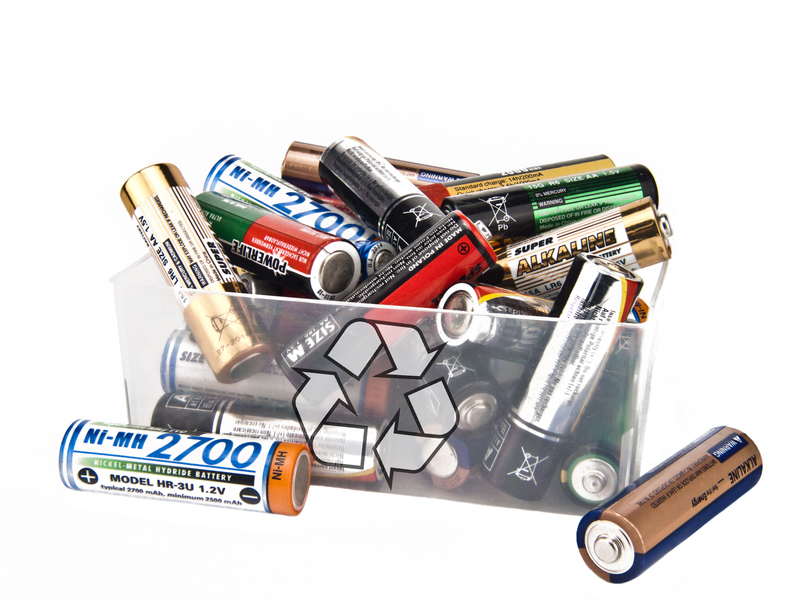Effective Ways to Dispose of PPE Waste Without Harming the Environment
Personal Protective Equipment (PPE) has become a critical line of defense against infectious diseases and hazardous environments. However, the improper disposal of PPE waste has led to an environmental challenge, raising concerns over pollution and ecosystem damage. In this article, we explore eco-friendly ways to dispose of PPE waste and provide actionable solutions for businesses, healthcare facilities, and individuals. This comprehensive guide highlights the best methods for PPE waste management, outlining their benefits, challenges, and how everyone can play a role in protecting our planet.
Understanding PPE Waste and Its Environmental Impact
PPE waste primarily includes single-use items such as masks, gloves, face shields, and protective gowns. Since the outbreak of COVID-19, the world has witnessed an exponential increase in PPE usage, resulting in millions of discarded items daily. When PPE is not disposed of responsibly, it can:
- Pollute land and waterways, harming wildlife
- Increase landfill volumes, contributing to greenhouse gas emissions
- Release microplastics and toxic substances into the environment
- Block drainage systems, leading to urban flooding
- Spread pathogens if contaminated equipment is handled unsafely
The environmentally responsible disposal of PPE is vital to minimizing the ecological footprint of essential protective measures.

Why Traditional Disposal Methods Fall Short
Historically, most PPE waste is thrown into general trash bins, ending up in landfills or incinerated. While these methods are convenient, they have significant environmental drawbacks:
- Landfilling: Most PPE is made from plastics such as polypropylene, which can take centuries to break down and may never fully decompose. This leads to long-term pollution and landfill overflow.
- Incineration: Burning PPE at high temperatures can destroy pathogens but often releases harmful gases and particulates, unless strict emission controls are in place.
- Open Dumping: In areas without formal waste management, discarded PPE can clutter public spaces, parks, and natural habitats, causing visible and hidden pollution.
Therefore, seeking sustainable PPE waste disposal practices is paramount for a healthier planet.
1. Source Reduction: Minimize PPE Waste at Its Origin
The most effective way to reduce the environmental impact of PPE waste is to create less of it. Consider the following strategies:
Switch to Reusable PPE Where Safe and Practical
- Reusable cloth masks, gowns, and face shields can often be sanitized and worn multiple times, reducing single-use waste volume.
- Implement rigorous cleaning and disinfection protocols to ensure safety. For healthcare settings, always adhere to regional regulatory advice.
Choose Eco-Friendly and Biodegradable Alternatives
- Brands now offer masks and gloves made from plant-based or biodegradable materials that break down naturally, reducing long-term environmental impact.
- Be sure to verify the authenticity of biodegradability claims to avoid greenwashing.
2. Safe Collection and Segregation of PPE Waste
Proper collection and segregation are crucial for effective PPE waste management. Follow these steps to ensure that PPE does not contaminate other waste streams:
- Use clearly labeled disposal bins specifically for used PPE. In high-risk settings, use color-coded and closed-lid bins.
- Separate contaminated from uncontaminated PPE wherever possible to streamline treatment and reduce unnecessary processing.
- Encourage proper hand hygiene before and after handling used PPE to minimize the risk of infection or contamination.
3. Specialized PPE Recycling Programs
Recycling PPE waste is challenging due to contamination risks and diverse materials. However, innovative recycling solutions are emerging:
Partner with Specialized Recycling Companies
- Certain organizations accept PPE waste, such as masks and gloves, and process them into plastic pellets for new products (e.g., outdoor furniture, building materials).
- Research local partners or national programs like TerraCycle (where available) to responsibly recycle PPE.
- Ensure all PPE destined for recycling is clean and dry to minimize hazards to facility workers.
Supporting Closed-Loop Systems
- Some manufacturers design PPE to be returned after use for safe recycling or reprocessing, creating a closed-loop supply chain.
- Encourage workplaces, schools, and hospitals to explore these innovative partnerships.
4. Safe Disposal through Sanitary Landfill and Controlled Incineration
For personal protective equipment waste that cannot be recycled or reused, the next best step is safe disposal:
- Sanitary Landfills: Use only approved, engineered landfill sites with protective lining and leachate collection systems to minimize soil and water contamination. Never litter or use illegal dumpsites for PPE.
- High-Efficiency Incineration: If available, dispose of PPE in facilities with advanced filtration systems that capture pollutants. This method not only destroys infectious agents but can also generate energy (waste-to-energy plants).
Always avoid burning PPE in open spaces or household incinerators, as this emits toxic fumes and particulate matter.
5. Transforming PPE Waste into Energy
Emerging technologies can convert unrecyclable PPE waste into energy through advanced processes:
- Pyrolysis: This process heats PPE in the absence of oxygen, breaking down plastics into fuel or raw materials for industry.
- Gasification: Converts PPE waste into synthetic gas, which can be used to produce electricity or heating.
While these technologies are still developing in many regions, they promise a more sustainable PPE waste disposal solution by reducing landfill volumes and recovering valuable energy.
6. Community Engagement and Public Education
Awareness and education are vital in ensuring that individuals, communities, and organizations engage in safe PPE waste disposal. Effective strategies include:
- Public information campaigns on the dangers of improper disposal and benefits of responsible practices.
- Involving schools, workplaces, and local governments in PPE waste collection programs and environmental initiatives.
- Clear and visible signage at waste bins, parks, transport hubs, and other public spaces to guide proper disposal.
7. Government Policies for Safe PPE Waste Disposal
Legislation and regulation play a key role in driving sustainable PPE waste management. Governments can:
- Enforce mandatory separation and proper handling of PPE waste in public and private facilities.
- Provide funding for research, infrastructure, and public outreach on PPE waste disposal solutions.
- Set standards for biodegradable or recyclable PPE production and incentivize sustainable innovations.
- Monitor and penalize illegal dumping or burning of medical and PPE waste to protect communities.
8. Best Practices for Individuals at Home
Even at the household level, it is possible to dispose of PPE waste without harming the environment. Here's how:
- Never flush masks, gloves, or wipes down toilets or drains, as these can clog systems and pollute waterways.
- Place used PPE in a sealed bag before placing it in the trash, to protect sanitation workers and reduce contamination risk.
- Whenever possible, choose reusable masks and eco-friendly PPE for everyday use.
- Stay informed about local recycling or take-back programs for PPE waste and make use of them.
Challenges and Future Directions in PPE Waste Management
Though recycling and safe disposal options exist, widespread adoption faces several key challenges:
- Lack of awareness, especially in rural areas and developing countries
- Limited access to specialized recycling or incineration facilities
- Complexity and cost of developing biodegradable or reusable PPE that meets high safety standards
- Changing public behaviors and habits around waste disposal
Looking ahead, collaborations between industry, governments, and citizens will be crucial in:
- Scaling up green PPE innovations
- Making recycling and energy conversion technologies more accessible and affordable
- Establishing universal guidelines for PPE waste disposal to avoid confusion and improve compliance
- Investing in education and behavioral change campaigns targeting PPE litter and pollution

FAQs on Environmentally Friendly PPE Waste Disposal
- Can all PPE items be recycled?
Not all PPE items are easily recyclable due to material types and contamination risks. Check for local programs and only recycle PPE if specifically accepted. - Are biodegradable or compostable PPE reliable?
While some products are genuinely biodegradable, always verify certifications. Proper composting facilities are required for them to break down efficiently. - What should I do if I find littered PPE?
Wear gloves, use a litter picker or tongs, and dispose of the PPE in a sealed bag. Wash hands thoroughly afterward. - How can workplaces encourage staff to dispose of PPE responsibly?
Provide clear signage, easy access to labeled bins, routine training, and regular communication about environmental impacts.
Conclusion: Towards a Greener Future with Responsible PPE Waste Disposal
The rise in PPE waste is an environmental issue that demands a coordinated, multifaceted response. By reducing single-use consumption, choosing sustainable alternatives, championing recycling, and advocating education, we can minimize the negative impacts of PPE waste. Everyone--from manufacturers to end users--has a vital part to play in adopting environmentally friendly PPE waste disposal methods.
Let's commit to safeguarding both public health and the planet by making informed decisions about disposing of PPE waste without harming the environment. Small changes in daily habits and decisive collective action can make a lasting, positive impact on our world.